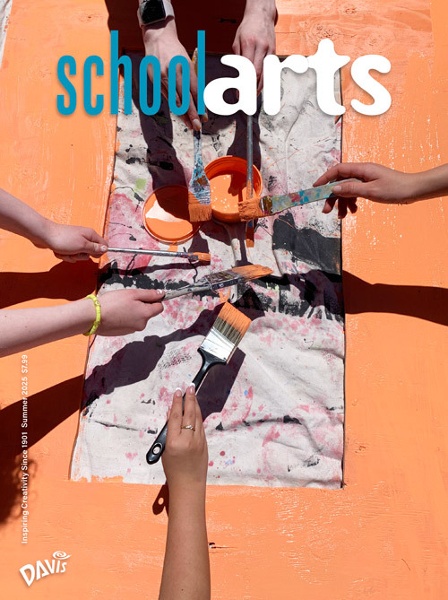Artist Birthday: Barbara Chase-Riboud
The tradition of African American women sculptors goes all the way back to the 1800s with Edmonia Lewis (1844–1907), continues through the Harlem Renaissance in the person of Augusta Savage (189 ...
Read MoreThe tradition of African American women sculptors goes all the way back to the 1800s with Edmonia Lewis (1844–1907), continues through the Harlem Renaissance in the person of Augusta Savage (189 ...
Read MoreArt history is full of examples of the cultural preoccupation with the use of written language within the visual arts field—from illustrated scrolls of ancient Egypt to the Pop Art obsession wit ...
Read MoreStarting in the late 1800s, posters began to be designed by fine artists, and what ensued what has been called the Poster Renaissance. After World War II, Swiss artists developed the International Typ ...
Read MoreI’ve posted previously about how poetry can be a visual art form when in the hands of a great calligrapher. I am not ashamed to repeat that assertion with this beautiful example of calligraphy c ...
Read MoreClaes Oldenburg believed that art should literally be made of the ordinary world. His theory was that the reality of art would replace everyday reality. An important early work was The Street (1960). ...
Read MoreMay was proclaimed Jewish American Heritage Month in 2006 to celebrate 350 years of Jewish contributions to American history and culture. To celebrate Jewish contributions to American art, this week I ...
Read MoreApril is National Poetry Month in the United States. This celebration of literary pursuits was begun by the Academy of American Poets in April 1996. The celebration encourages anyone connected with bo ...
Read MoreIt may feel like winter, but technically it’s still autumn until the 21st of December. I like nothing better than celebrating autumn—my favorite season in New England—with an artist ...
Read MoreWe end Asian American and Pacific Islander Heritage Month and begin LGBTQI+ Pride Month with a wonderful, gentle soul. Martin Wong was part of the vibrant art community in the East Village of New York ...
Read MoreContemporary African American artists use diverse techniques, ideas, and the history of African Americans in works of art that speak in new and exciting ways, including these works from the 1980s and ...
Read MoreLast week I featured an artist from the 1800s, Mary Ann Willson, for Pride Month 2019. Today I continue my Pride Month posts with a look at contemporary artist Glen Ligon. ...
Read MoreLeave it to Honoré Daumier to sum up a personality that could be any number of jerks in our current narrow-minded, materialistic, me-me-me culture. In honor of the advent of 2017, I decided to ...
Read MoreDid you known that the Japanese did not have a written language up until the 400s CE? I find cursive Japanese so incredibly beautiful. The story behind its development is very interesting, and I bet y ...
Read MoreThe G.I. Bill after World War II (1939–1945) allowed unprecedented numbers of African Americans to attend art schools. Since African Americans served with distinction in both WWII and the Korean ...
Read MoreAbstraction is any art that does not represent observed aspects of nature or transforms visible forms into a stylized image. Another definition (which I prefer) is that abstraction is the extreme simp ...
Read MoreDuring the Harlem Renaissance (ca. 1919–1939), African American artists encouraged each other to document the black experience in the United States. This included uplifting scenes of Afric ...
Read MoreWant to know what’s new from Davis? Subscribe to our mailing list for periodic updates on new products, contests, free stuff, and great content.
We use cookies to improve our site and your experience. By continuing to browse our site, you accept our cookie policy.
Find out more.

Our new issue is out, and it's all about INNOVATION. Art teachers share new and exciting art-making experiences in and outside the art room.
Read More